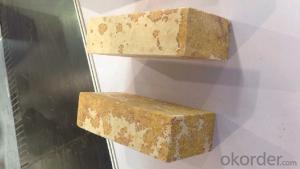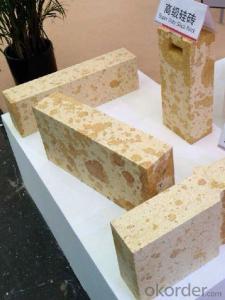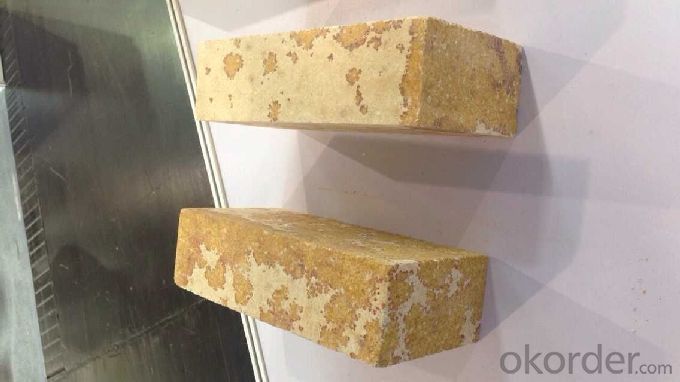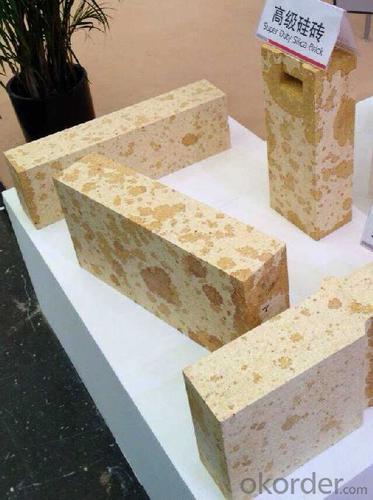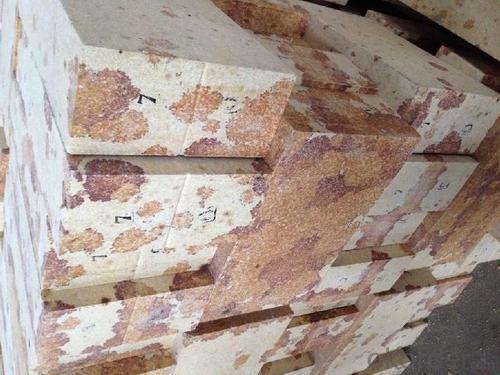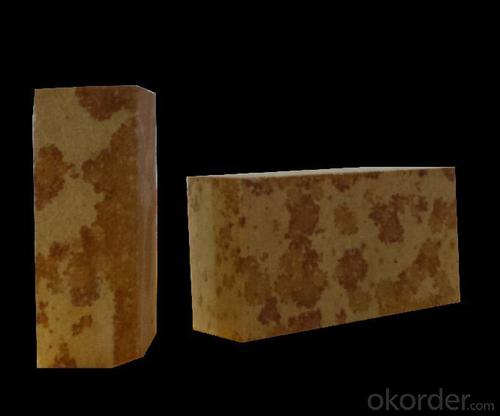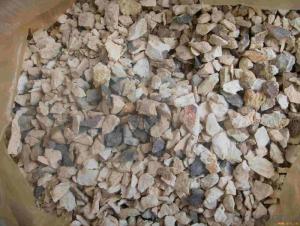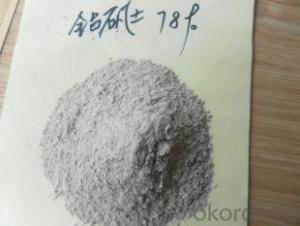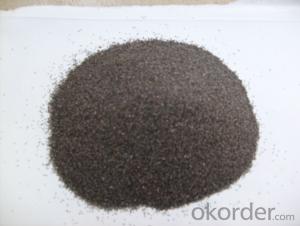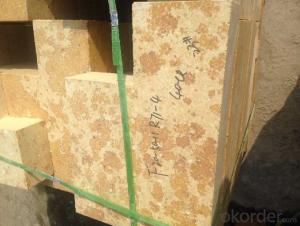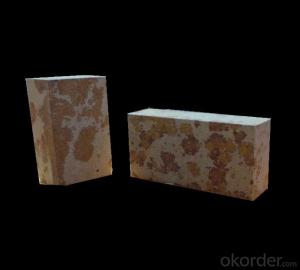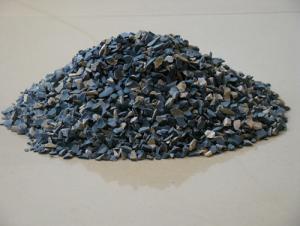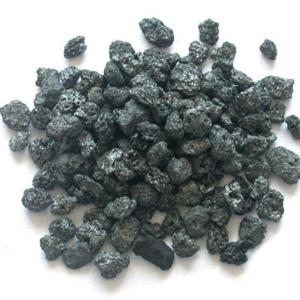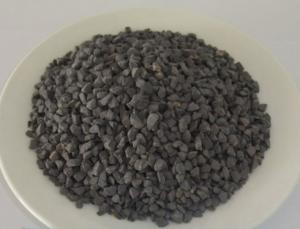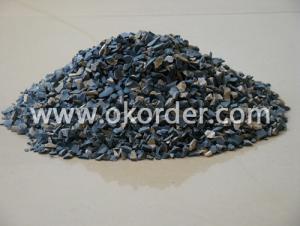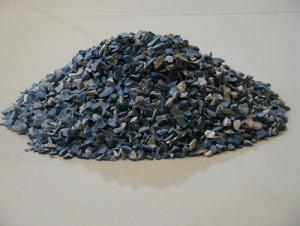Raw Materials for Refractory:Lightweight Silica Brick 94A
- Loading Port:
- Tianjin
- Payment Terms:
- TT OR LC
- Min Order Qty:
- 20 m.t.
- Supply Capability:
- 1000 m.t./month
OKorder Service Pledge
OKorder Financial Service
You Might Also Like
General Information:
CMAX brand Silica bricks are made from high quality quartz tail sand, lime and mineralizing agent through the process of crashing, screening, mixing, pressing, drying and sintering.
Features of Refractory silica bricks for Glass Kiln:
1. high volume density of 2.34 g/cm3
2. high SiO2 content of 96%
3. low iron content of 0.8%
4. low melting point of 5%
Applications of Refractory silica bricks for Glass Kiln:
Because of the high temperature resistant performance significantly, long service life characteristics (as long as more than eight years) of refractory silica brick for Glass Kiln, it can significantly improve the quality of glass, so the refractory silica bricks are widely used in all kinds of glass furnace melting department, regenerator and other important parts.
Physical and chemical index of refractory silica bricks for glass kiln:
Item Brand | CMAX-96A | CMAX-96B | ||
SiO2 % ≥ | 96 | 96 | ||
Al2O3+2(K2O+Na2O) % ≤ | 0.5 | |||
Fe2O3 % ≤ | 0.8 | 1 | ||
Refractoriness °C ≥ | 1710 | 1710.0 | ||
0.2MPa Refractoriness under load °C ≥ | 1680 | 1670 | ||
Apparent porosity % ≤ | Brick with weight no less than 20kg | 20 | 20 | |
rick with weight less than 20kg | 22 | 22 | ||
CS MPa ≥ | 35 | 35 | ||
Bulk desity g/cm3 ≤ | 2.34 | 2.34 | ||
Starndard Size:
230*114*64mm
230*114*76mm
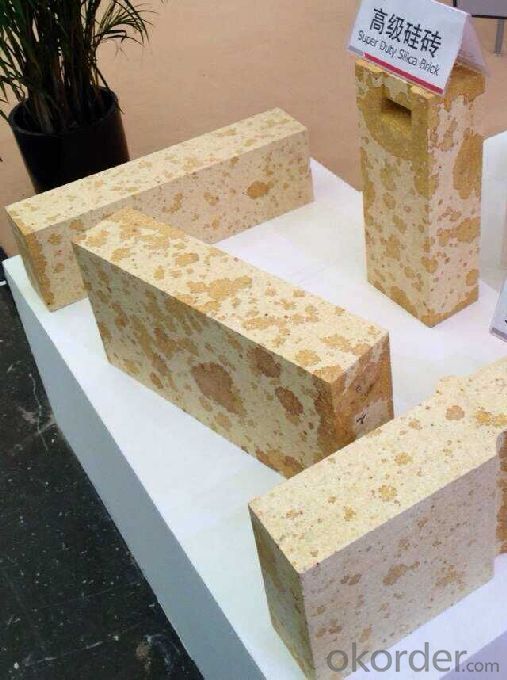
- Q: Who knows the refractoriness of high temperature lightweight firebricks?
- Hefei Jiu oak decor help you answer; the biggest feature is refractory: refractoriness 700.
- Q: How to divide fire rating of decorating materials ?
- level A: incombustible, B1: Flame retardant, Level B2: combustible, Level B3: Flammable.
- Q: What are the materials for refractory materials? What are their names?
- Basic refractories in Magnesium Oxide and calcium oxide as the main ingredient, commonly used is brick. Magnesium Oxide 80% to more than 85% containing magnesia brick, has good resistance to alkaline slag and slag, refractory clay brick and brick high ratio. Mainly used in open hearth furnace, oxygen converter, electric furnace, non-ferrous metal smelting equipment and high temperature equipment.
- Q: What effect does aluminium powder play in refractory bricks?
- Aluminum powder can increase the high melting point of refractory refractory, while increasing material density, hardness and other changes in physical properties of aluminum powder in the application of unshaped refractories in the gas can be discharged in the material, prevent the refractory sudden warming occurred during the burst.
- Q: What kind of refractory materials are used in the intermediate frequency furnace?The domestic boric acid can be used as a lining?, how much is the rate?
- Acid, neutral, basic and composite materials are used in intermediate frequency furnace. Domestic boric acid is practicable. The ratio is to determined combined with material, steel (iron) species, smelting temperature, current and other factors
- Q: What material is used to make furnace pipe of refractory bricks?
- Furnace pipe of refractory brick is an indispensable part of casting cupola. Furnace pipe is divided into upper and lower part. Radial direction and axial breathing. The upper furnace pipe adopts double layer steel structure and countercurrent air supply mode. The lower furnace pipe is made by processing integrated heat resistant steel in flange, fin and inner wall in wearing parts. The operation life is over 3000h. There is radiating rib of heating air on the edge of furnace pipe liner by using the heat of casting cupola to heat air in cupola. Hot air temperature is about 180-250℃, which contributes to improve trhe thermal efficiency of production equipment, decrease production cost and improve economic benefit of enterprises.
- Q: Can you tell me the classification of fireproof sealing material.
- Fire blocking is to use fire blocking material as partition between cable threading hole and electric hole. Its role is to prevent the cable itself catacausis or outside naked light make the fire spread to achieve the purpose of protecting the safety of personnel and equipment. The principle of fire-proof sealing is plugging material acting as bloating heat absorption and heat insulation. Fireproof sealing material in current market include: fire-proof sealing plate, foam sealing materials, flame retardant module, flexible organic plugging material, inorganic fire sealant, plugging and fire package, etc. The wide usage of fire-proof sealing material in building construction can ensure the fire flame and high temperature flue gas not to extend another fire partition tendril.
- Q: What are the main characteristics of the sic refractories?
- 1. The usage temperature of silicon carbide refractory is generally 1760 ℃ 2. The silicon carbide refractories can withstand dramatic changes in temperature, and a good thermal shock resistance performance. To prevent the cracking or breaking of lining refractories. 3. Under the conditions of high or low temperature, it can withstand a certain compressive stress. 4. Under the conditions of high or low temperature, it can withstand friction. 5. It can withstand the huge hydraulic pressure or buoyancy of the metal. 6. It can also withstand the effect of furnace gases to prevent the infiltration of other refractories and reactions.
- Q: How to choose the material of refractory?
- Long using temperature of aluminum oxide fiber is 1400 ℃, containing chromium aluminum silicate fiber, quartz, high purity aluminum silicate fiber, long-term use of temperature is 1000-1200 ℃ has aluminum silicate refractory fiber according to different raw materials, advanced refractory fiber (such as alumina. Commonly used vitreous aluminum silicate refractory fibre is amorphous, zirconium oxide refractory fibre) using temperature is 1700 ℃ view as >and the best temperature is 1300 ℃. Crystalline refractory fiber are polycrystalline mullite fiber, including ordinary aluminum silicate fiber, alumina and graphite refractory fiber, etc. The use of common refractory fiber temperature is 1150 ℃;>
- Q: Could you tell me how does fire protection standard of decorative material is divided?
- Divided by plate material: structure material, base layel materials and fabric; Divided by fire protecrtion type: easy to burn, difficult to burn, flame retardant, incombustible material. Material has no fire rating, only the different from the time of combustion limit. Building fire protection. Building fire protection is the fire prevention measures of buildings. In the architectural design, fire protection measures should be taken to prevent fires and reduce fire hazards to life and property. Building fire prevention measures includs prophylaxis before the fire and measures during the fires. The former is mainly to determine the fire resistance rating and fire-proof structure, control fuel quantity and space easy to fire site; The latter mainly for fire partition, setting of evacuation and smoke, fire-fighting equipment, etc. In ancient China, flammable wood are usually taken as a building material, which has accumulated many experiences for the building fire protection .
Send your message to us
Raw Materials for Refractory:Lightweight Silica Brick 94A
- Loading Port:
- Tianjin
- Payment Terms:
- TT OR LC
- Min Order Qty:
- 20 m.t.
- Supply Capability:
- 1000 m.t./month
OKorder Service Pledge
OKorder Financial Service
Similar products
Hot products
Hot Searches
Related keywords
